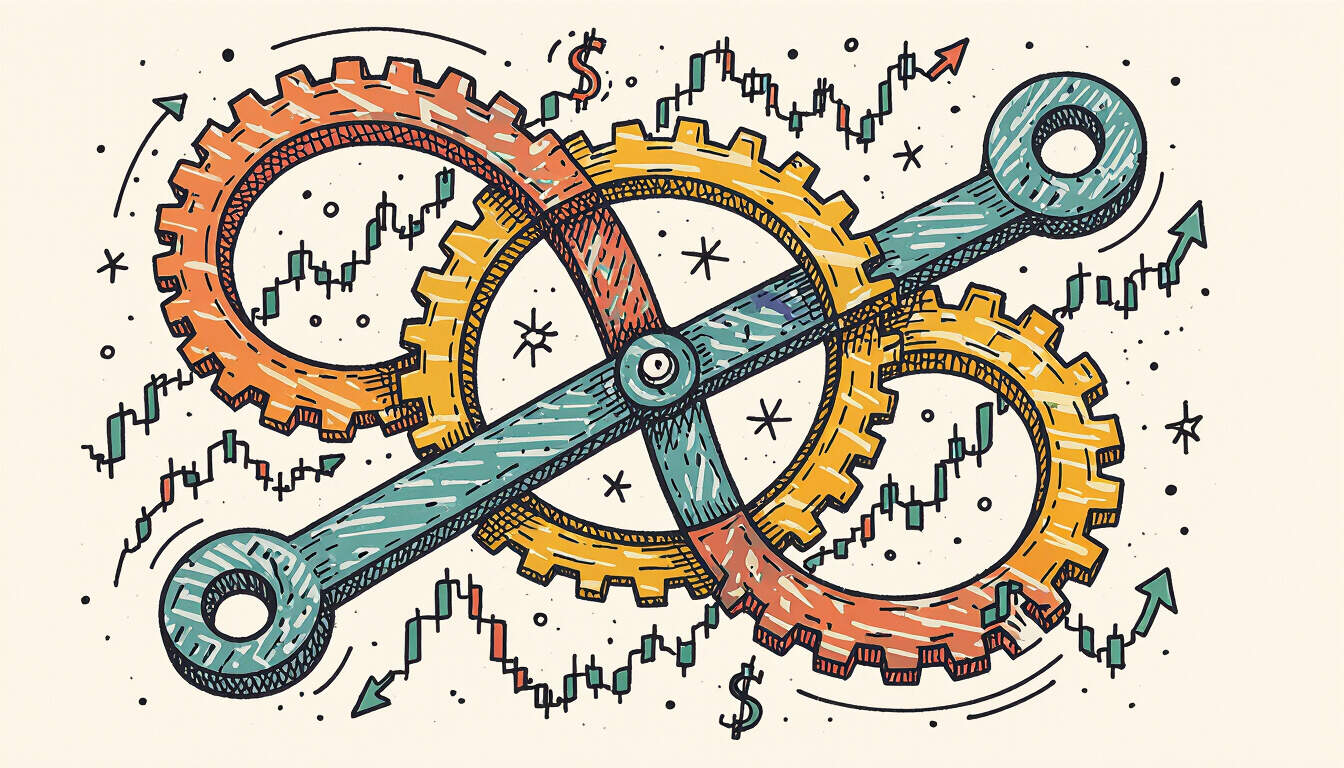Vega and Volatility in Compounded Leverage Systems
 by Shanie Goodwin
by Shanie Goodwin
Vega measures an option's sensitivity to changes in volatility, playing a key role in compounded leverage strategies. Investors use these elements to amplify returns while managing risks in advanced financial techniques, offering deeper insights for professionals seeking edge in markets.

Compounded leverage systems offer advanced ways for investors to multiply gains through repeated applications of borrowed funds. These systems often involve options trading, where volatility becomes a central factor.
The Basics of Compounded Leverage
In financial markets, compounded leverage refers to the process of reinvesting returns to create exponential growth. This approach builds on initial investments by using tools like margin or derivatives. For instance, an investor might use leverage to buy more assets, then reinvest profits to increase exposure over time. Such strategies demand careful attention to market dynamics.
Understanding Vega in Options
Vega represents the amount an option's price changes with a 1% shift in implied volatility. This metric helps professionals assess how sensitive their positions are to market fluctuations. In compounded leverage setups, Vega can significantly influence overall portfolio performance, as higher volatility often leads to larger price swings.
The Role of Volatility in These Systems
Volatility indicates the degree of variation in asset prices over time. In compounded leverage contexts, it acts as both a risk and an opportunity. High volatility can magnify returns when leverage is applied repeatedly, but it also heightens potential losses. Professionals monitor volatility indices to time their entries and exits effectively.
Integrating Vega and Volatility for Enhanced Strategies
When combining Vega with compounded leverage, investors can refine their approaches. For example, in a leveraged options portfolio, positive Vega positions benefit from rising volatility, allowing for compounded gains through reinvestment. This integration requires analyzing historical data to predict movements and adjust leverage accordingly.
Practical Applications in Investment
Professionals often apply these concepts in scenarios like covered calls or protective puts within leveraged frameworks. Here, volatility drives the option premiums, which can be reinvested to compound leverage. By focusing on assets with stable yet fluctuating patterns, analysts build systems that capitalize on market cycles.
Risks Involved
While the potential for growth is appealing, compounded leverage systems carry inherent dangers. Increased volatility can erode positions quickly, especially if Vega is not managed well. Investors must balance exposure to avoid over-leveraging during turbulent periods.
Benefits for Experienced Users
For financial analysts and seasoned investors, these systems provide tools to outperform benchmarks. By leveraging volatility insights and Vega calculations, strategies become more precise and adaptable. This method supports long-term wealth accumulation through disciplined application.
Case Studies and Analysis
Consider a scenario where an investor uses compounded leverage on equity options. If volatility rises unexpectedly, Vega-driven price increases can lead to substantial profits upon reinvestment. Conversely, a drop in volatility might require scaling back leverage to preserve capital. Such examples highlight the need for ongoing evaluation.
Tools and Techniques
To implement these systems, professionals rely on software for real-time Vega and volatility tracking. This data informs decisions on leverage levels and position sizing. Regular reviews ensure that strategies align with current market conditions.
Future Considerations
As markets evolve, the interplay between Vega and volatility in compounded leverage will continue to shape investment landscapes. Professionals who stay informed can adapt their methods to emerging trends, maintaining a competitive advantage.
In summary, these elements form a cornerstone of advanced techniques, enabling calculated risk-taking and potential for amplified returns.
